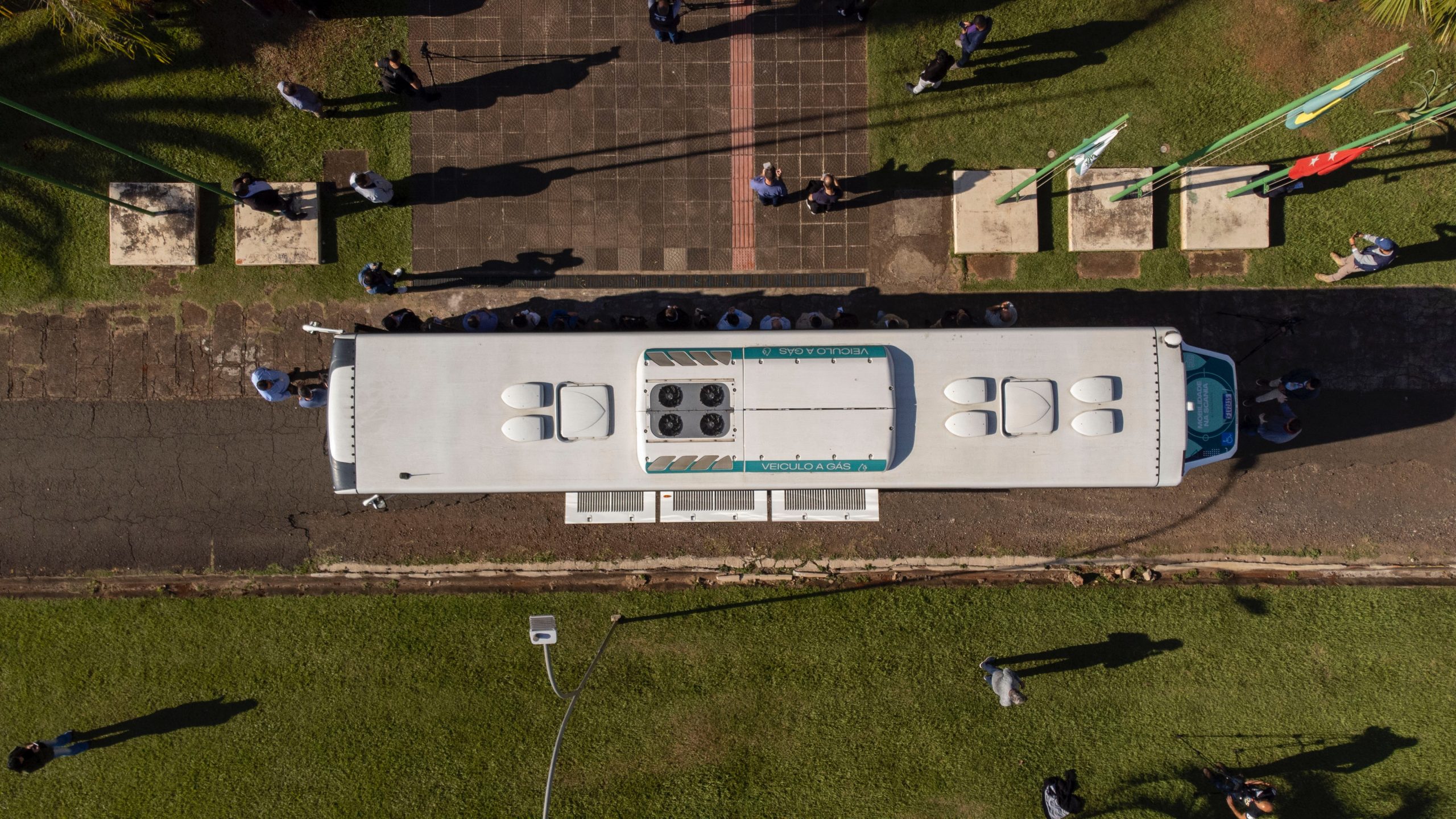Renewables and Energy: Infrastructure Builds Driving Sustainable Power
Cooling
Data Centre Build News & Insights
Data Centres
Innovations in Data Center Power and Cooling Solutions
News
Renewables and Energy: Infrastructure Builds Driving Sustainable Power
Sustainable Infrastructure: Building Resilient, Low-Carbon Projects
Vertiv's guidance on data centres during extreme heat
Summer in the northern hemisphere has just started, but already devastating heatwaves have washed over much of the US, Mexico, Canada, Europe and Asia. Widespread wildfires in Canada have triggered air quality alerts across that country and much of the eastern half of the US and similar extreme heat events across Asia have caused widespread power outages, Europe also continues to break heat records as the fastest warming continent. The data centre cooling experts at Vertiv have issued updated guidance for managing the extreme heat.
Climate change has made the past eight years the hottest on record, but with an El Niño weather pattern compounding the issue this year, many forecasts anticipate record-breaking temperatures in 2023. The sizzling outdoor temperatures and their aftermath create significant challenges for data centre operators who already wage a daily battle with the heat produced within their facilities. There are steps organisations can take to mitigate the risks associated with extreme heat. These include:
Clean or change air filters: The eerie orange haze that engulfed New York was a powerful visual representation of one of the most immediate and severe impacts of climate change. For data centre operators, it should serve as a reminder to clean or change air filters in their data centre thermal management systems and HVAC systems. Those filters help to protect sensitive electronics from particulates in the air, including smoke from faraway wildfires.
Accelerate planned maintenance and service: Extreme heat and poor air quality tax more than data centre infrastructure systems. Electricity providers often struggle to meet the surge in demand that comes with higher temperatures, and outages are common. Such events are not the time to learn about problems with UPS system or cooling unit. Cleaning condenser coils and maintaining refrigerant charge levels are examples of proactive maintenance that can help to prevent unexpected failures.
Activate available efficiency tools: Many modern UPS systems are equipped with high efficiency eco-modes that can reduce the amount of power the system draws from the grid. Heatwaves like those seen recently push the grid to its limits, meaning any reductions in demand can be the difference between uninterrupted service and a devastating outage.
Leverage alternative energy sources: Not all data centres have access to viable alternative energy, but those that do should leverage off-grid power sources. These could include on/off-site solar arrays or other alternate sources, such as off-site wind farms and lithium-ion batteries, to enable peak shifting or shaving. Use of generators is discouraged during heat waves unless an outage occurs. Diesel generators produce more greenhouse gas and emissions associated with climate change than backup options that use alternative energy. In fact, organisations should postpone planned generator testing when temperatures are spiking.
“These heatwaves are becoming more common and more extreme, placing intense pressure on utility providers and data centre operators globally,” says John Niemann, Senior Vice President for the Global Thermal Management Business for Vertiv. “Organisations must match that intensity with their response, proactively preparing for the associated strain not just on their own power and cooling systems, but on the grid as well. Prioritising preventive maintenance service and collaborating with electricity providers to manage demand can help reduce the likelihood of any sort of heat-related equipment failure.”
“Again this year, parts of Europe are experiencing record setting heat, and in our business we specifically see the impact on data centres. Prioritising thermal redundancy and partnering with a service provider with widespread local presence and first-class restoration capabilities can make the difference in data centre availability,” says Flora Cavinato, Global Service Portfolio Director. “Swift response times and proactive maintenance programs can help organisations to sustain their business operations while effectively optimising their critical infrastructure.”
Click here for more on Vertiv.
Isha Jain - 21 July 2023
Data Centre Build News & Insights
Data Centre Infrastructure News & Trends
Data Centres
Infrastructure Management for Modern Data Centres
Renewables and Energy: Infrastructure Builds Driving Sustainable Power
Start Campus and EXA to expand network route
Start Campus has announced that EXA Infrastructure (EXA) has committed to invest in two new diverse and redundant terrestrial routes in Sines, Portugal.
EXA’s strategic network expansion in Sines links Start Campus’s Sines Project, a 495MW hyperscale data centre development, to its backbone in Madrid, Spain. The new connectivity hub will be the gateway to European, African and American digital platforms.
The key location of the project further strengthens Portugal as a connectivity hub for Europe, providing access via transatlantic cable landings and EXA’s expansive terrestrial network route.
Steve Roberts, VP of Network Investments, EXA Infrastructure, says, “EXA continues to invest and expand our network to ensure we are enabling the growth and success of our customers. We are witnessing an increasing demand for enhanced connectivity routes in and out of Southern Europe and we are pleased to partner with Start Campus to power this demand by connecting Sines to our pan-European backbone.”
Set to be ready for service in late 2023, the project will be a large hyperscaler data centre ecosystem. It benefits from ocean water cooling systems, high voltage power grids, and high capacity international fibre optic cables. Being fully powered by renewable and affordable energy, the company also offers a 100% sustainable campus powered by 24x7 renewable energy facilities, resulting in a low Total Cost of Operations (TCO) for its customers.
Last year, it signed an agreement with EllaLink. The partnership provides a framework of cooperation between the two, guaranteeing that the infrastructures interact, knowledge is shared, and synergies are established to promote Sines as a new digital hub in global data network systems.
Today, Sines is directly connected to Lisbon, Madrid, Fortaleza, São Paulo and Rio de Janeiro in Brazil. In the future, the connectivity will be extended to Marseille, Barcelona, Casablanca and more.
Isha Jain - 7 July 2023
Data Centre Build News & Insights
Data Centres
Renewables and Energy: Infrastructure Builds Driving Sustainable Power
Sustainable Infrastructure: Building Resilient, Low-Carbon Projects
Sustainability role of data centres highlighted
Harnessing waste heat from UK data centres to warm residential homes and businesses will stimulate the low carbon heat market and help the government achieve its 2035 net zero target, according to Aman Chahal, CEO of TaperedPlus.
The Stockton-on-Tees business has been involved in a European data centre project which is diverting its surplus heat to nearby homes.
It is estimated that energy intensive data centres with the power of 100MW are capable of heating around 80,000 homes, with the UK ranked third in the world for data centres, which stood at 456 in 2022. Generally, temperatures generated in the centres’ hot aisles range from 80-115°, and it was recently reported that just one small washing machine sized data centre is heating the swimming pool at Exmouth Leisure Centre, saving several thousands of pounds in energy costs.
Data centres prevent its servers from overheating through the costly and intensive process of either pumping cool water through the building or by expelling the heat, which can instead be used to fuel district heating systems. Currently around 45% of data centre energy is used by cooling systems. The EU is already seeking to make the heating and cooling sector carbon neutral by 2035, which includes plans to harness waste heat from data centres. While the UK government has made a case for heat networks, they are relatively uncommon, given their complexity and financial outlay involved.
Aman says that TaperedPlus was brought in on the European project to create a non-combustible insulation system to aid drainage whilst maintaining thermal performance and onerous fire requirements. He adds, “It was amazing to see what is otherwise classed as ‘waste’ heat being used to benefit the local community. In today’s digital-driven world, data centres are very much a growth area, so there is a huge opportunity to make them sustainable.
“It is vital, as data centres are particularly energy intensive and account for 4% of global electricity consumption and 1% of greenhouse gas emissions.
“It’s time the UK caught up with Europe in respect of this technology and made a concerted effort to attract the necessary investment required to harness this largely untapped resource.
“This would further stimulate the low carbon heat market and encourage widespread adoption of heat networks, which would make a major contribution to the government’s 2035 net zero target.”
Examples of data centre heat networks include:
Stockholm Data Park, which aims to meet 10% of the entire heating needs of the Swedish capital by 2035.
In the Netherlands, Switch Datacentres is replacing natural gas with excess heated water from direct liquid cooling of data centre heat being sent to homes.
Microsoft has partnered with Fortum to heat thousands of homes in Helsinki. It currently supplies 250,000 customers and says, once complete, 40% can be heated by direct liquid cooling.
Isha Jain - 3 July 2023
Data Centre Build News & Insights
Data Centres
Innovations in Data Center Power and Cooling Solutions
News
Renewables and Energy: Infrastructure Builds Driving Sustainable Power
Sustainable Infrastructure: Building Resilient, Low-Carbon Projects
Aruba on track to meet the CNDCP 2030 targets
Aruba has announced that it has completed the certification of its adherence to the principles of the Climate Neutral Data Centre Pact (CNDCP) by meeting the requirements of the Self-Regulatory Initiative (SRI).
Bureau Veritas has validated the conformity of the procedures and calculation methodologies for the company's data centres, in relation to the values of PUE, WUE, clean energy, economy and circular energy indicated by the Pact. This milestone demonstrates that Aruba is already on track to achieve the objectives set by the Pact for 2030.
The Pact
In 2021, leading cloud infrastructure providers and data centre operators founded the CNDCP, a historic commitment to proactively drive the transition to a climate neutral economy. To date, more than 80 signatories, including national industry trade associations and individual operators, have joined the initiative aimed at a more sustainable management of the industry, setting targets for 2025 and 2030 in the following areas:
Energy efficiency of data centres by meeting defined thresholds that are measured through monitoring and recording of PUE data.
Usage of energy in increasing percentages from renewable and carbon-free sources that are confirmed through record keeping and copies of certificates of power purchase agreements.
Water conservation is ensured through the calculation of WUE and the recording of incoming water meter readings for each data centre.
Circular economy is checked through server reuse and recycling programmes, which require companies to have deployment plans and asset management mechanisms that allow for the recycling, resale or reuse of IT equipment.
Circular energy is measured by periodic audits to assess implementations for the possibility of heat recovery and reuse.
The Pact, therefore, by focusing primarily on achieving climate neutrality, is in line with various aspects of the Green Deal. By addressing these areas, it aims to promote a positive change in the data centre sector towards a more sustainable and responsible future.
As part of the implementation of SRI, the first deadline requires a declaration by the operator that confirms the existence of monitoring policies and procedures, and a calculation methodology for data collection and storage. For large operators, this requires verification by an independent third party and for small and medium-sized operators, a self-declaration is sufficient.
After announcing in March 2023, the successful completion of the audit concerning the compliance of the first perimeter in the path of adherence to the Pact, with this, Aruba has confirmed that it has completed the certification of adherence to the SRI and is, therefore, compliant with the terms of the Pact.
Isha Jain - 28 June 2023
Data Centre Build News & Insights
Data Centres
Infrastructure Management for Modern Data Centres
Renewables and Energy: Infrastructure Builds Driving Sustainable Power
Sustainable Infrastructure: Building Resilient, Low-Carbon Projects
LCL Data Centers to use biofuel for standby power
Caterpillar has announced that LCL Data Centers has commissioned a new 13.5MVA standby power solution at its Brussels-West data centre in Aalst that operates exclusively on 100% hydrotreated vegetable oil (HVO) fuel. It is the first data centre in the nation to use biofuels for standby power operation.
Facility planners for the company leveraged the expertise of engineering experts from Eneria to design, install, test and commission the solution, which consists of six Cat 3516B diesel generator sets.
“With our deep roots in Belgium, we are committed to supporting environmentally responsible initiatives that create a better world,” says Laurens van Reijen, Managing Director, LCL. “Our collaboration with Eneria and Caterpillar has demonstrated the viability of HVO100 in our standby power systems. We’re strongly committed to becoming carbon neutral by the end of this decade, and we’ve launched numerous initiatives across our operations to help us achieve this goal.”
Eneria will also provide ongoing maintenance and service under a Cat Customer Value Agreement (CVA). Through fully customisable CVAs, Cat dealers assume responsibility for the onsite maintenance and service of power solutions, enabling customers to focus on running their enterprises.
“We were delighted to receive the request from the data centre specialist, LCL to ensure its emergency power generators operate on HVO100, a renewable diesel fuel. We tested the operation of Cat generator sets with traditional diesel, HVO100, and a blend of these fuels. We concluded that the power and reactivity performance of the generators remained the same regardless of the fuel used,” says Tim Bisson, Director of Eneria Belux.
Propelled by the success of the project in Aalst, LCL plans to convert the standby power solutions at all its data centres to operate on HVO over the next two years.
The standby system was installed as part of a €15.5m expansion that tripled its footprint in Aalst while achieving the Uptime Institute’s Tier III certifications for design and construction.
Isha Jain - 28 June 2023
Data
Data Centre Build News & Insights
Data Centres
Renewables and Energy: Infrastructure Builds Driving Sustainable Power
Sustainable Infrastructure: Building Resilient, Low-Carbon Projects
Schneider Electric unveils an industry-first carbon calculator
Schneider Electric has unveiled a new framework to help companies understand the full environmental impact of enterprise data centres. The framework, detailed in a whitepaper includes a Lifecycle CO2e TradeOff tool for accurately estimating the total carbon footprint of data centres – including Scope 1, 2 and 3 emissions.
By quantifying Scope 3 emissions from its value chain, organisations can measure its total carbon footprint, including outsourced IT services from cloud and colocation service providers. This whitepaper takes a data-driven approach to helping data centre operators identify and categorise emissions from operations and the supply chain, then prioritise efforts to make impactful carbon reductions.
As the US and EU are proposing rules to mandate, enhance, and standardise climate-related disclosures, accounting for and reporting on Scope 3 emissions will become a future requirement. Establishing and implementing a GHG framework that incorporates carbon counting and target setting while systematically reviewing company data and emission sources is the foundation to creating an achievable reduction plan. Electricity generation, GHG emissions and water consumption determine the carbon and water footprint of data centres, including that of its suppliers.
“Developing a climate strategy that identifies the biggest source of carbon emissions in the value chain is fast becoming a data centre industry priority alongside the urgency to establish easy-to-use frameworks. We are 100% behind the drive for the industry to become the most sustainable in the world, by making resources free and readily available,” says Pankaj Sharma, Executive Vice President, Secure Power Division at Schneider Electric. “We have shared our latest whitepaper, and our free Lifecycle CO2e calculator, at a time when data centre operators are increasingly trying to understand its carbon footprint. Proactive data centre operators understand it will be held accountable for achieving net zero climate goals in the future to meet the expectations of its stakeholders, including customers, investors, employees, business partners and communities up and down the value chain.”
Highlights of the whitepaper include:
A ‘Data Centre Lifecycle CO2e Calculator’ to quantify the details driving Scope 3 in an enterprise data centre like embodied and sub-system embodied carbon.
An approach to managing a hypothetical 1MW data centre with a focus on Scope 3 emissions and proposed actions for improvements like purchasing efficient and low carbon products.
Advice on standardised metrics and what to measure like fuel and energy-related activities, upstream transportation and distribution.
Isha Jain - 27 June 2023
Data Centre Build News & Insights
Data Centres
Infrastructure Management for Modern Data Centres
Renewables and Energy: Infrastructure Builds Driving Sustainable Power
Sustainable Infrastructure: Building Resilient, Low-Carbon Projects
AirTrunk announces new data centre in Hong Kong
AirTrunk has announced plans to develop its second data centre in Hong Kong, supporting the demand for critical digital infrastructure in the region.
The company's HKG2 data centre will be scalable to over 15MW and strategically located in a new, major cloud availability zone in East New Territories. Initial capacity is expected to be delivered to the anchor tenant in mid-2024.
HKG2 complements HKG1, which opened in late 2020 in the West New Territories and provides location diversity for the company’s large technology customers. The addition takes its capacity to more than 35MW in Hong Kong.
The facility will become the 10th data centre in its APJ platform that also includes data centres in Australia, Japan, Singapore and Malaysia. Collectively, the platform will offer almost 1.38GW across the region.
AirTrunk's Deputy CEO, Michael Juniper, says, “As a key international business hub, Hong Kong has ambitions to accelerate the development of a digital economy. Combined with the rapid rise of artificial intelligence (AI), there is a huge demand for cloud services and the supporting critical digital infrastructure. HKG2 will play an important role in responding to this demand.”
The data centre will be a retrofit of an existing building and designed to meet the stringent security requirements of global technology customers such as PCI DSS, ISO27001, SOC2 Type 2. Close to key data centres, it will enable international connectivity with direct and low latency access to Greater China and neighbouring North East Asian countries.
AirTrunk's Head of Hong Kong, KC Li, says, “The development of HKG2 will bring significant benefits to the Hong Kong economy, including the creation of new jobs, enablement of public cloud, sustainable innovation, as well as community contributions.”
HKG2 will be designed to an industry low power usage effectiveness of 1.25 and as part of the company’s broader emissions commitment, deliver net zero emissions by 2030, as well as renewable sourcing options.
Isha Jain - 27 June 2023
Data Centre Build News & Insights
Data Centres
Innovations in Data Center Power and Cooling Solutions
Renewables and Energy: Infrastructure Builds Driving Sustainable Power
Sustainable Infrastructure: Building Resilient, Low-Carbon Projects
Colt DCS launches new ESG strategy report
Colt Data Centre Services (DCS) has published its latest Sustainability Highlight report, covering the period of 2022. Launched as Colt DCS’ highlights report, it focuses on the three strategic areas of decarbonising the business, connecting people, and safeguarding the company’s operations. It has achieved a remarkable 52% reduction in Scope 1 and Scope 2 emissions and a 28% reduction in Scope 3 emissions, compared to 2019. These significant reductions highlight the extent of the company’s sustainable practices as a data centre provider.
Some of the other key highlights from the sustainability report include:
A 30% reduction in emissions across all scopes compared to 2019.
Achieved a global Net Promoter Score (NPS) of 72.
Procured 100% renewable energy in all European data centre sites.
Colt DCS has been working diligently to achieve its sustainability targets, as a part of its ongoing commitment to minimise environmental impact, promoting social responsibility and driving positive change within the global data centre industry.
The report showcases the company's significant achievements in the areas of Environmental, Social and Governance (ESG) for 2022. It highlights its commitment to reaching net zero by 2045. EcoVadis partnership and a top 1% sustainability rating, it continues to set data centre industry standards in its ESG practices. The report was prepared in conjunction with the Colt Group, which comprises Colt Data Centre Services and Colt Technology Services.
Decarbonisation has been a primary focus and one of the key pillars in the ESG strategy. Its sustainability targets have been approved by the Science-based Targets initiative (SBTi) in alignment with the latest net zero standard. Colt DCS has successfully reduced its carbon footprint by 30% compared to the 2019 baseline, amounting to an estimated 186,487 tonnes of CO2e. This reduction has been aided by the use of 100% renewable energy across its UK and European data centres, all of which are 100% carrier-neutral sites, engaging suppliers more effectively and implementing innovative cooling technologies.
Its strategy goes beyond environmental sustainability and includes a strong focus on social engagement. The company recognises the importance stakeholder engagement across its value chain, including customers, suppliers, local communities and employees, with the aim of making a lasting positive impact in the regions it operates in. It encourages employee engagement and has established partnerships with local charities, forming employee led CSR teams to identify fundraising initiatives and volunteering opportunities. Local communities also serve as contributors of its workforce.
The company recognises the importance of effective governance in achieving its goals for inclusion. During the pandemic, it introduced designated wellbeing days, prioritising the mental and physical health of its workforce. The effort saw 78% engagement with its ‘People Matter’ survey, with the results highlighting strengths under diversity & inclusion, customer focus, empowerment, sustainable engagement and well-being & stress.
It is also striving to create an inclusive culture that values diversity of thought and representative of the communities it operates in. It is also committing to implementing equitable business practices that enhance the employee experience.
In addition to prioritising stakeholder engagement, it delivers exceptional client service across its data centre portfolio. In 2022, the company achieved an impressive global Net Promoter Score (NPS) of 72 across all customers in Europe and Asia, which is a testament to its goal of becoming the most trusted and customer-centric operator in the industry.
Niclas Sanfridsson, CEO at Colt Data Centre Services, says, "We have made impressive strides towards achieving our sustainability goals and I would like to express my sincere gratitude to our employees, customers and shareholders for their unwavering support.”
Niclas adds, “Colt DCS has demonstrated remarkable dedication in delivering its sustainable hyperscale strategy while upholding its vision of being the most trusted and customer-centric data centre operator.”
Isha Jain - 26 June 2023
Data Centre Build News & Insights
Innovations in Data Center Power and Cooling Solutions
Renewables and Energy: Infrastructure Builds Driving Sustainable Power
Sustainable Infrastructure: Building Resilient, Low-Carbon Projects
Alibaba Cloud analyses carbon footprint for the Olympic Esports Week
Alibaba Cloud has announced that its AI-driven sustainability solution, Energy Expert, has been trialled to measure and analyse carbon emissions from temporary construction built to host the first Olympic Esports Week, generating data-driven insights on the choice of materials and equipment. The tool has been deployed through its partnership with the International Olympic Committee (IOC).The company deployed Energy Expert to measure and analyse the carbon emissions of the event’s temporary construction. A series of metrics including the impact of energy consumption, waste management, signage and decoration were assessed. This software-as-a-service tool was used by the local organising committee to compare the relative impacts of several types of materials and equipment.Energy Expert allows event organisers to identify the sources of the carbon emissions from venue construction and operation, quantify the carbon footprint generated by a venue and visualise a venue’s sustainability performance via an integrated dashboard and online reports.According to the solution, the carbon footprint of temporary construction for the Olympic Esports Week 2023 is estimated at 274 tons CO₂e, after replacing 60% of printed signage with digital alternatives which led to 14 tons CO₂e of CO₂ emission reductions, as well as reusing 50% of carpets after the event that would slash emissions further by 10 tons CO₂e.
“We are always looking for ways to reduce our impact on the environment, and we’re pleased to work with Alibaba Cloud to apply cutting-edge technologies to measure carbon emissions so we can continue to make a difference,” says Vincent Pereira, Head of Virtual Sport, IOC Sports Department.
“We have been supporting the IOC’s digital transformation of the Olympics since Tokyo 2020, and it has been an honour to be part of this latest, historic milestone for virtual sport. Sustainability is one of the priorities for our sports innovation roadmap. As the sports industry continues to evolve, we’re passionate about providing organisations with timely data, actionable insights and energy-saving recommendations that make positive and tangible impacts,” says Selina Yuan, President of International Business, Alibaba Cloud Intelligence.
The week marks the collaboration between the IOC and Alibaba on digital transformation and is Alibaba’s first large-scale international project to tackle carbon emissions within the esports industry.The esports industry has a growing environmental impact as the sport becomes more mainstream. Industry analysis estimates that in 2022 a single esports team could create as much as 100 tonnes of CO₂ emissions. Individual consumption is also growing as 40% of the global population now play video games, according to industry analyst firm, DFC Intelligence, meaning that there’s a significant impact to be addressed.
Isha Jain - 23 June 2023
Data Centre Build News & Insights
Data Centres
Innovations in Data Center Power and Cooling Solutions
Renewables and Energy: Infrastructure Builds Driving Sustainable Power
Sustainable Infrastructure: Building Resilient, Low-Carbon Projects
Aruba takes the next step towards data centre energy efficiency
Aruba has announced that it is the first Italian company to have received the declaration of conformity of the Data Centres of the Ponte San Pietro technology campus to the European Code of Conduct for Data Centre Energy Efficiency (CoC), following an audit conducted by a third-party verification body, Bureau Veritas.
The CoC for data centre energy efficiency was established by the European Commission in response to increasing energy consumption of data centres with the aim of informing and stimulating data centre operators to reduce this consumption in a cost-effective manner, without hampering the mission critical function of data centres. The focus is on how to improve energy demand within the data centre sector by raising awareness and recommending best practices in terms of energy efficiency.
The CoC declaration of verification represents a guarantee of compliance with the best practices of the code, developed by the European Joint Research Centre, and is divided into thematic areas, such as utilisation, management and planning, IT, cooling, power, building and monitoring, with the aim of concretely reducing energy consumption.
At the same time, it represents a competitive advantage for all customers, as it ensures compliance with one of the main requirements for data centres in the DNSH principle, the criterion that companies are required to observe in order to be eligible for NRP funding. According to this principle, companies that contribute through their economic activities to the protection of the ecosystem must not cause any significant harm to the environment.
In addition, this code of conduct contributes to the compliance with the requirements of the Climate Neutral Data Centre Pact framework, to which Aruba is a signatory, together with other European providers, with the aim of making data centres climate neutral by 2030.
Isha Jain - 21 June 2023

Head office & Accounts:
Suite 14, 6-8 Revenge Road, Lordswood
Kent ME5 8UD
T: +44 (0)1634 673163
F: +44 (0)1634 673173









